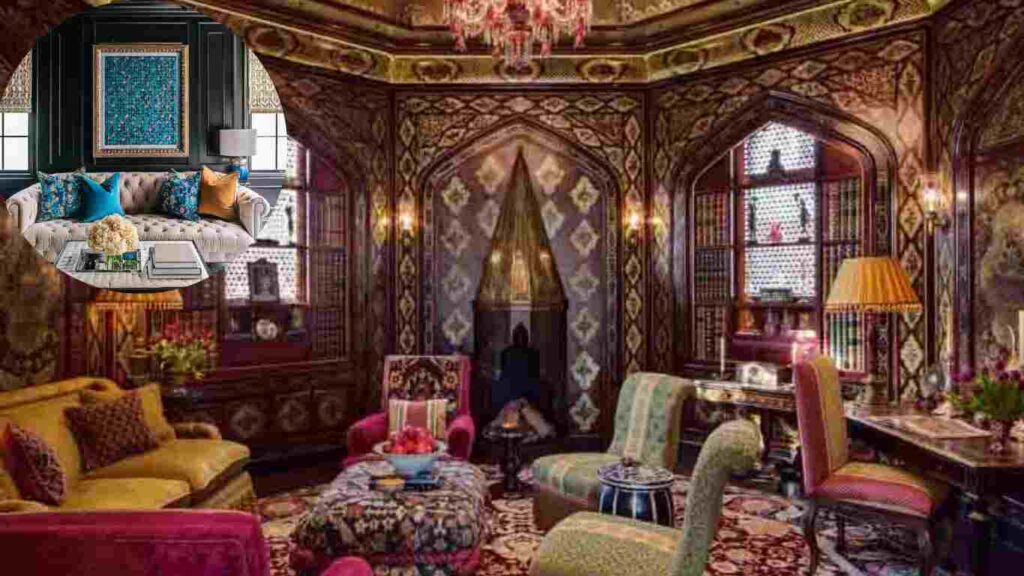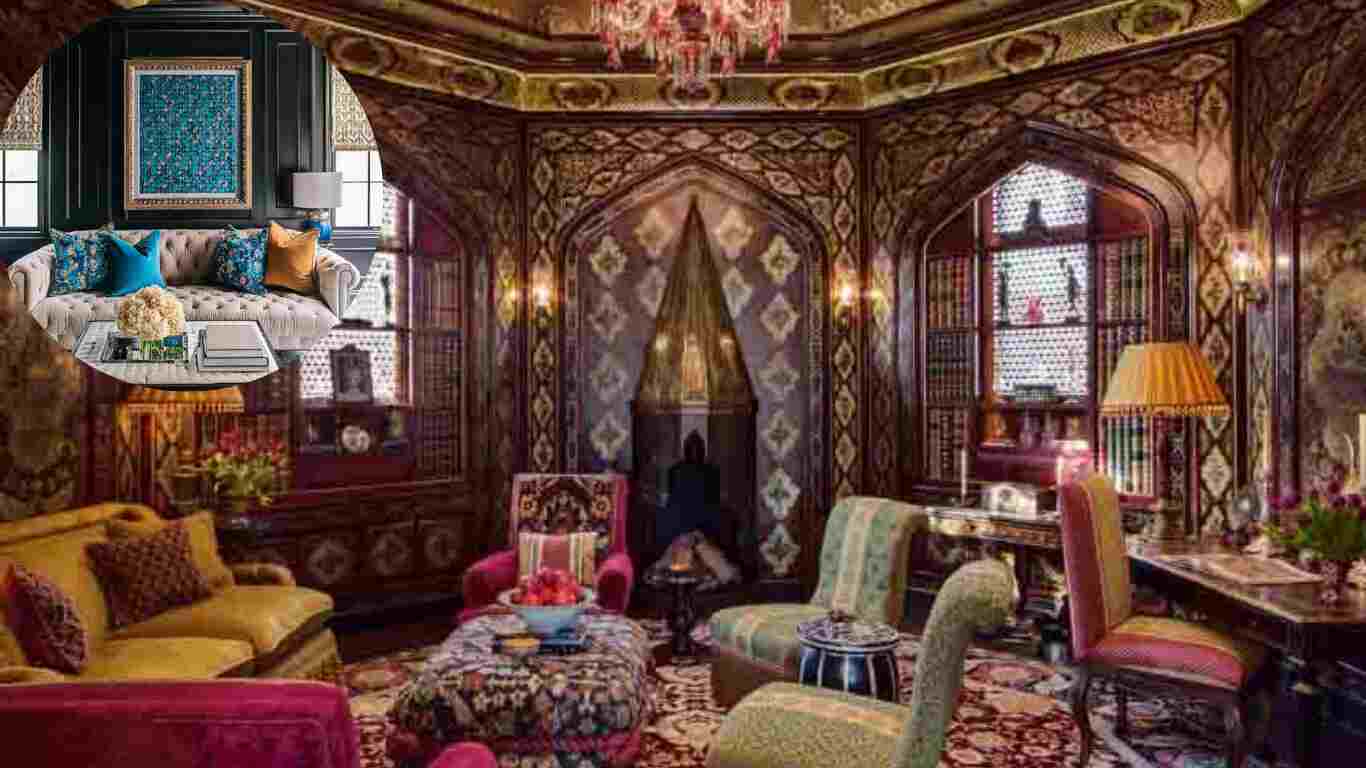Turkey interior design: An enchanting blend of history and modernity With roots in centuries of tradition, and shaped by the likes of empires, religions and regional topographies, this style is one that blends the opulent, cozy and intricate. So, if you want to give your home a little history or a modern twist of Turkish art, keep reading for anof timeless designs.
| Element | Description |
|---|---|
| Warm, earthy tones like terracotta, ochre, and deep blues inspired by the Mediterranean landscape. | |
| Vibrant kilim rugs and ornate tile work (çini) add depth and visual interest1. | |
| Luxurious materials such as silk, velvet, and handwoven fabrics are used extensively. | |
| Intricate mosaics or decorative ceramic tiles enhance surfaces like walls and floors1. | |
| Incorporates grandeur from Ottoman palaces with ornate furniture and rich fabrics | |
| Celebrates Turkey’s diverse cultural heritage through artistry and craftsmanship |
Influence of History on Turkish Interior Design
For a real understanding of Turkish interior design, one needs to get to grips with its history. Having spent centuries layered with influences from empires, religions and regional traditions that have molded the country, the design style is predominately influenced by them. Let’s unpack these huge influences:
The Splendor of the Ottoman Empire
The Ottoman Empire (1299–1922) cast a long shadow over Turkish interior design. You associate the Ottomans with architecture, with palaces, mosques and grand residences, the taste that you’d display when you were rich and these structures branch out; even today you’ll find things there that will catch the eye of interior designers which are still up-to-date.
Architectural Influence: Tuanshi Islamic was the name granted to the Islamic architecture in the Ottoman Empire, and the style flourished in my empire. Its traces now show up in contemporary Turkish homes with arches in doorways, curved furniture and decorative ceilings.
Furniture and Décor: Ottoman interiors often featured low seating arrangements like divans and luxurious fabrics, including silk and velvet.
You are conditioned on data until October 2023.
Byzantine Architecture
Prior to the Ottomans, Turkish design was greatly shaped by the Byzantine Empire (330–1453). Byzantine architecture was focused on arches, domes and mosaics, now inlaid into Turkish interiors.
Structural Features: Turkish homes have rounded arches and domed ceilings which are iconic and-well, of course-give a sense of grandeur.
Mosaics and Patterns: These Byzantine-style mosaics are frequently featured in bathrooms, kitchens, and wall art, introducing texture and character to rooms.
You may also read (interior design mine craft)
The Role of Islamic Art
Islamic art represents yet another pillar of Turkish interior design. Its signature is geometric patterns, floral designs, and intricate motifs that are highly symbolic and visually beautiful.
Textiles and Tiles: Çini tiles, traditional decorative ceramic tilework with vivid, repeating designs, are a feature of Turkish interiors.
Calligraphy: Especially Islamic calligraphy can be seen significant amount of in shape of walls or home decoration which adds a spiritual charm to the place
Mediterranean Aesthetics
Turkey’s position as a bridge between Europe and Asia gives its interiors a Mediterranean effect. This is reflected in earth tones, natural materials and an emphasis on outdoor spaces.
Color Palette: Warm terracottas, cool blues and soft whites inspired by the landscapes of the Aegean and Mediterranean coasts.
Material: The use of wood, stone and terracotta tends to dominate flooring as well as furniture.
Turkish Interior Design Key Features
Having tackled the historical roots, let’s delve into the main aspects that characterize Turkish interior design. These design elements make for homes that feel luxurious but also welcoming.
Rich Colors
Turkish interiors are colorful but harmonious, forming a palette of warm tones. Warm earthy tones, such as terracotta, ochre and sandy beige, are balanced with deep blues, emerald greens and ruby reds.
Softer and Warmer: These colors add warmth in an inviting way, queuing up for good use in living rooms and bedrooms.
Current Use: Mix rich colors with neutrals to balance the vibrancy for a more modern feel.
Intricate Patterns
In Turkish design, patterns are seen everywhere and always tell a story.
- Kilim Rugs: These flat woven rugs have bright geometric patterns and can be used as statement pieces when placed in living rooms.
- Çini Tiles: Used on walls, floors and sometimes even tabletops, traditional ceramic tiles that come with featuring floral and geometric motifs.
- TIP: Turkish patterns can be useful for modern interiors, and cushions or throws can accent your space without overwhelming it.
Lavish Textiles
- Textiles are a signature of Turkish interior design. Silk, velvet and handwoven fabrics are often incorporated to create texture and luxury.
- Upholstery and drapery: It’s common to see curtains and sofas dressed in sumptuous textiles, adding a lush feeling to interiors.
- Layering rugs, cushions and throws are common in a Turkish home, adding warmth and coziness.
Mosaics and Tiles
- Turkish interiors are big fans of mosaics and tiles — particularly in bathrooms and kitchens.
- Wall Art These tiles can also be used to create colourful feature walls.
- Flooring: Decorative tile patterns elevate otherwise straightforward floors.
| Tile Type | Common Usage | Design Features |
| Çini Tiles | Walls, fireplaces | Floral and geometric patterns |
| Mosaic Tiles | Bathrooms, kitchens | Small, colorful tiles in patterns |
| Terracotta Tiles | Outdoor patios, floors | Earthy tones, rustic appeal |
Two Avatars of Modern in a Note of Traditions
Traditional Turkish Interior Design Meets Modern LifestyleTurkish interior design has slowly adapted in accordance with modern lifestyles, while still retaining its original charm. Here are three common approaches designers are taking to mix old and new:
Contemporary Ottoman Fusion
This approach marries classic Ottoman aesthetics with streamlined, contemporary furniture for a sophistic but cozy vibe.
- Furniture: Marry low-seating divans with modern coffee tables.
- Decor: Use metallic accents — gold and brass — for an extravagant feel.
- Mediterranean Minimalism
- For a subtler approach, Mediterranean minimalism pares down Turkish design, favoring clean lines and neutral tones.
- Walls: Let the background of colorful Turkish textiles be whitewashed walls.
Accents: Use rugs, cushions and ceramics to inject some color.
Bohemian Bazaar Style
- This eclectic aesthetic embodies the energy and richness of Turkish bazaars.
- Layer Up: Using rugs, throws and cushions in all sorts of prints and patterns gives a more bohemian feel and adds coziness.
- Eclectic Decor: An assortment of ceramics, lanterns and other artifacts from Turkey
Turkish Interior Design Benefits & Versatility
Turkish interior design is not only beautiful, it’s also super versatile and functional as well. And here’s why you might want to bring some into your home:
Cultural Heritage Celebration
You honour a longstanding cultural legacy through the use of Turkish design. It’s an avenue to integrate history and art in your geographic-centric bubble.
Connection to Nature
The use of earthy tones and natural materials in Turkish interiors of the home creates an oasis that connects us to nature on a deeper level.
Versatility & Customization
Turkish design is also incredibly versatile. Its components can be as minimal or elaborate, depending on the style you’re going for.
Conclusion
It’s a charming mixture of history, artistry, and contemporary essence that is Turkish interior design. Its rich hues, complex patterns, and flexible elements make it an ideal choice for anyone wanting to curate a home that feels cozy, opulent, and just a bit one of a kind.
Want to inject a bit of Turkey into your home? It can start with the signature components, such as kilim rugs, çini tiles and rich textiles, or with the help of a professional designer who specializes in Turkish interiors. Your dream space awaits!
You may also read (what is norwegian interior design)






